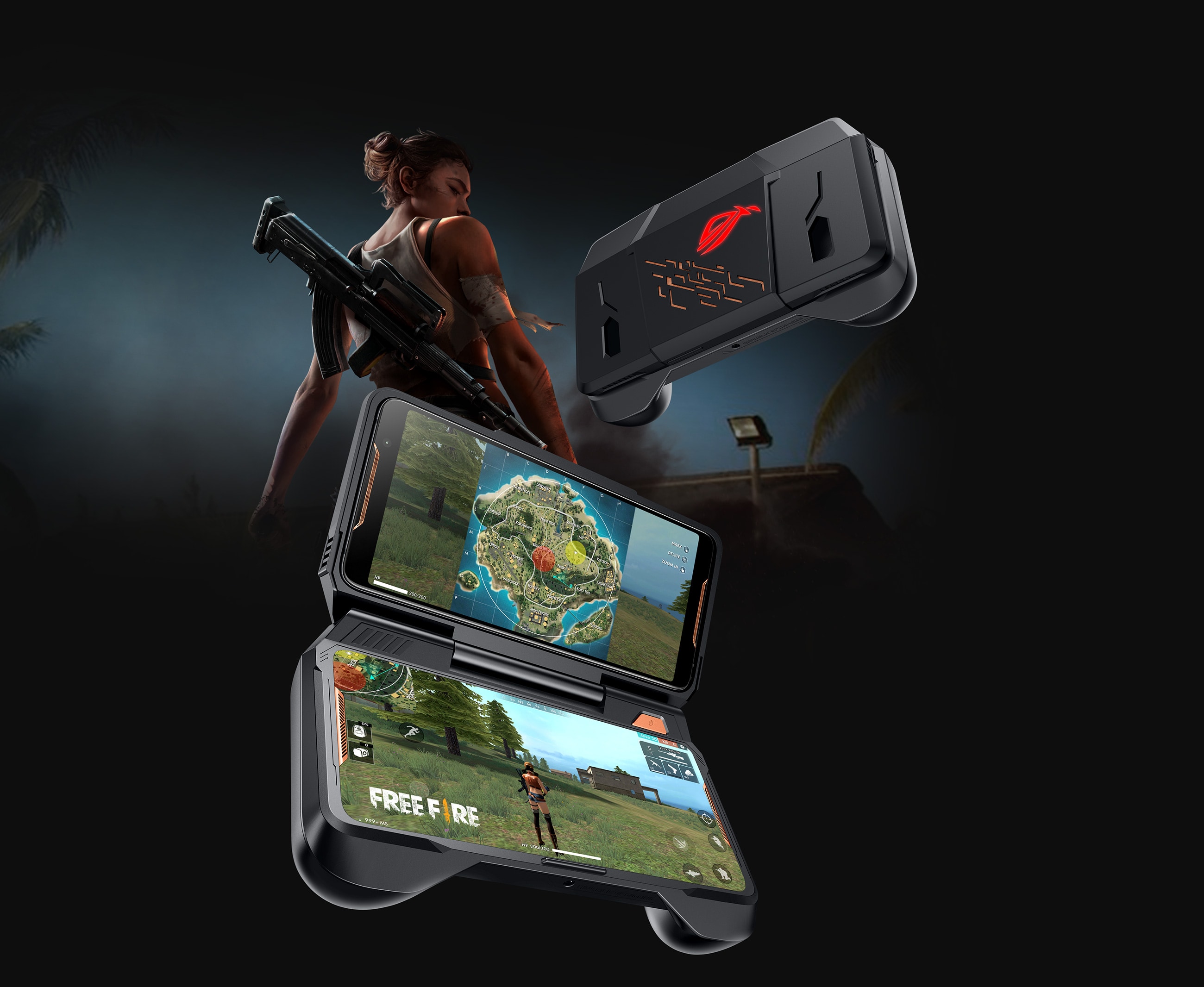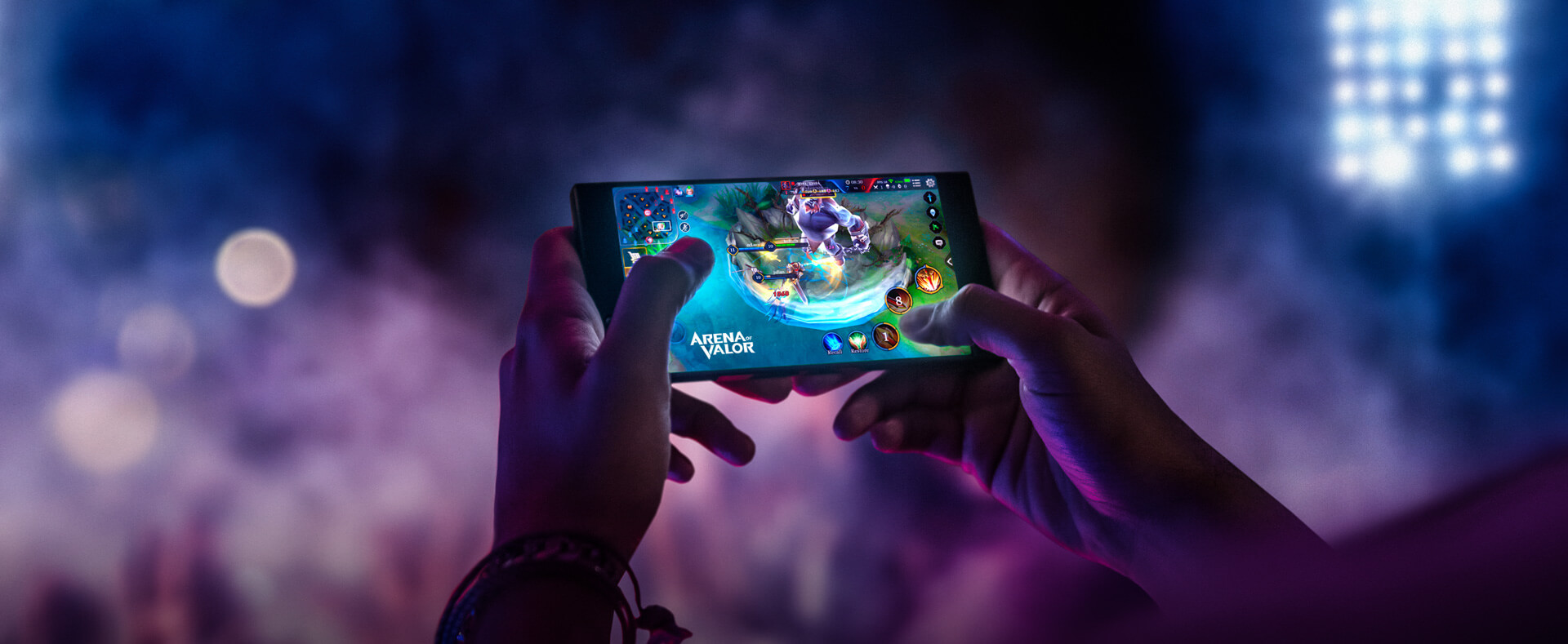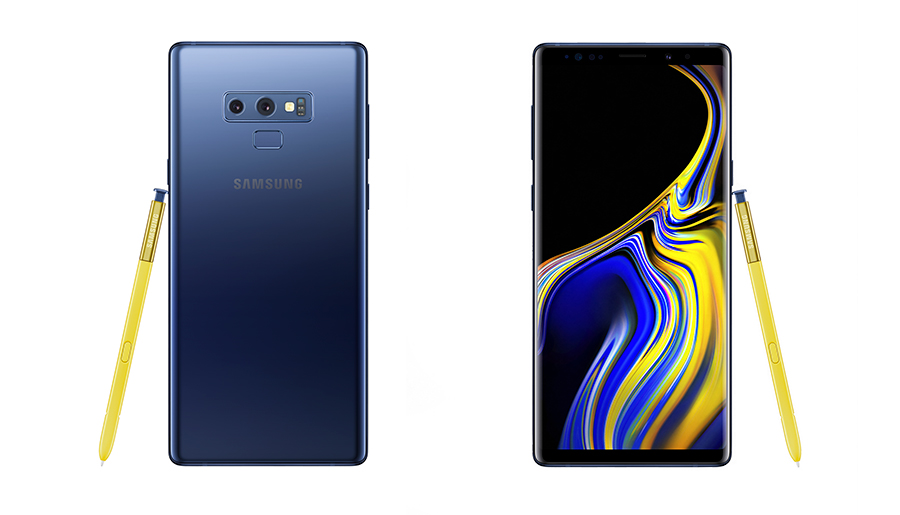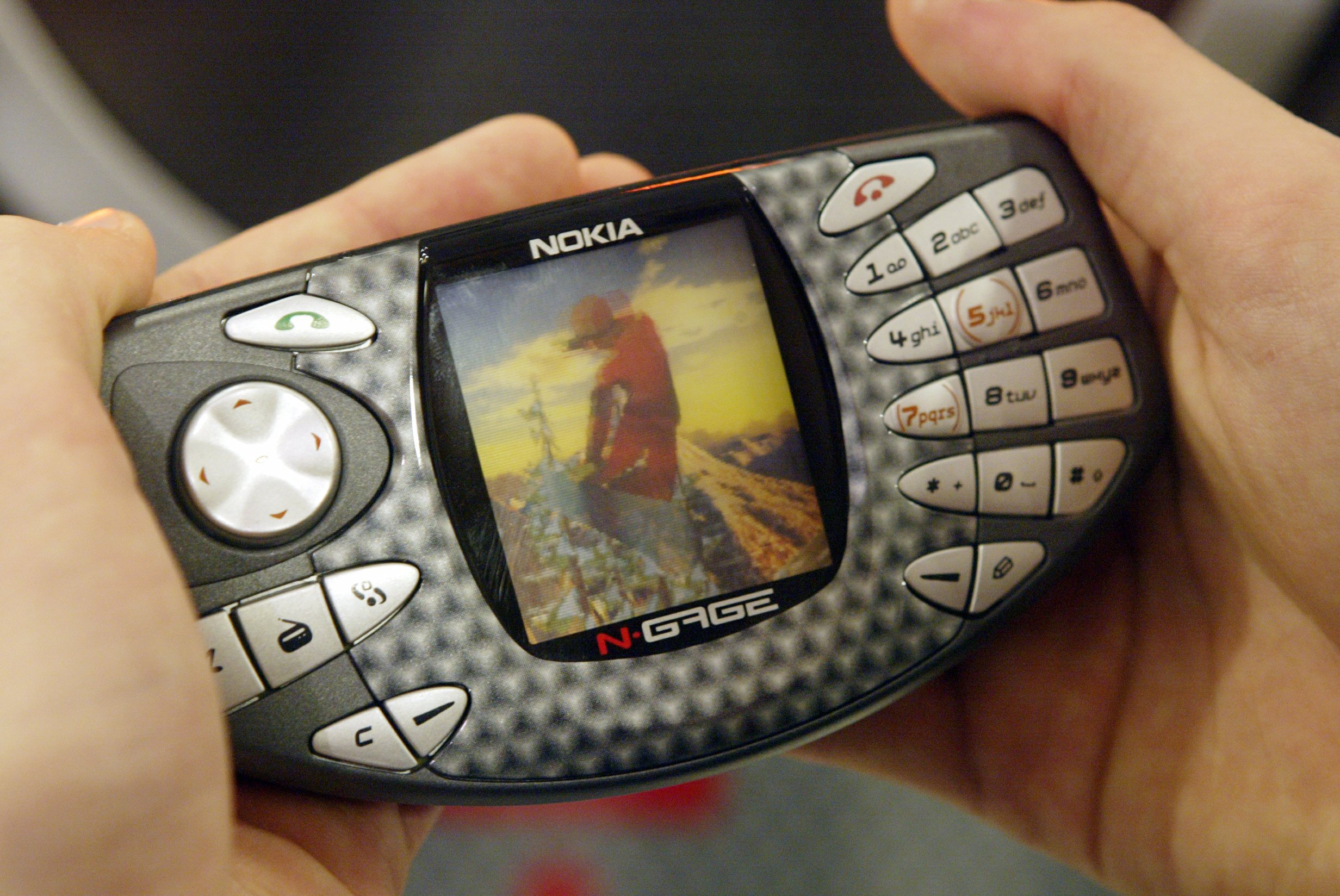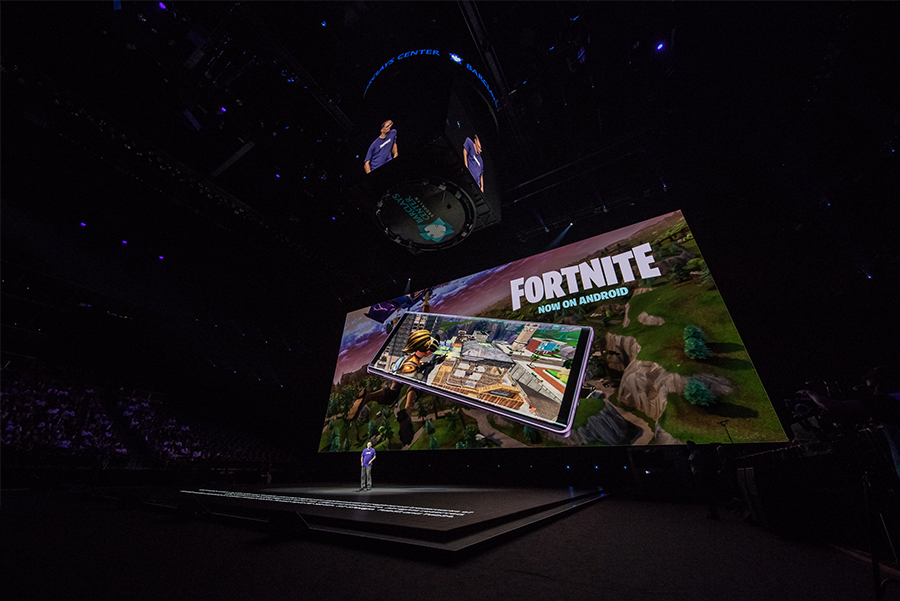Asus, Razer, Samsung: Gaming Phones Are Here to Stay
By Brian Crecente
LOS ANGELES (Variety.com) – A game developer took center stage at Samsung’s biggest annual event earlier this week. The largest smartphone company in the world brought Epic Games president Tim Sweeney on stage not just to announce that the Android version of “Fortnite” would be premiering on Galaxy phones, but also to underscore the gaming prowess of its latest model, the Galaxy Note9.
Gaming-centric phones and the games played on them are becoming an increasingly important element of the video game and smartphone industries, thanks to the growing number of people who like to game on the go. Mobile revenues will account for more than 50% of the nearly $138 billion global games market this year, according to global market intelligence group Newzoo. A
nd a mix of phone makers, video game companies, and PC manufacturers are taking note of that massive share mobile games hold of the video game market.
A Smartphone With Two Screens, Physical Triggers
Earlier this year, computer maker Asus unveiled its own game-centric phone under the company’s Republic of Gamer label. While already has a line of smartphones, the ROG Phone was purpose-built for gaming, said Vivian Lien, chief marketing officer of Asus North America, and the head of global ROG strategy.
The Republic of Gamer brand, which sells everything from motherboards to laptops and keyboards, started looking at the smartphone gaming landscape about a year and a half ago. What they saw was that where once games on smartphones were small, short diversions, they were now starting to become full-blown, in-depth games. Some were original, robust titles; others were ports of popular PC or console games. Gaming’s growing reach into smartphones was also driven by a more general growth of gaming culture into mainstream culture. Gaming was making the leap from a subculture to becoming a central, important part of mainstream culture.
“We thought, ‘What if we make a phone that is designed for gamers that still needs to work as a phone?’” Lien said.
While you can play games on just about any smartphone, the ROG team felt that there was a lot that it could bring to a phone if it was built specifically for gaming.
“For people spending a considerable amount of time playing games, we identified a few things that needed to be solved,” Lien said.
Heat dissipation was an early first problem. The longer you play a game on a smartphone, pushing the device to its limits, the hotter the device gets. That impacts the comfort of using the phone, but more importantly, it impacts the phone’s ability to deliver those high-end graphics at fast speeds. The company also noted that most games, especially the high-end ones, are played with the phone in a horizontal position, but most phones are designed around being used vertically. Solving that issue meant moving ports — like the headphone jack and power port — around, which meant redesigning the entire structure of the phone’s PCBs.
More obvious was the need to offer a phone with a powerful processor, lots of memory, high-end audio, and a fast, beautiful display.
“Things to drive the immersive experience,” Lien said.
What the company ended up with was a phone with a 6-inch AMOLED screen and 90Hz refresh rate. The phone runs on a 2.98GHz Qualcomm chip with 8GB of RAM and features a vapor-chamber cooling system. There are front-facing twin speakers and enhanced haptics to help make the experience of gaming on the go feel a bit more visceral. The phone even features touch points on the edge of the phone that the company calls “air triggers.” A software “x” mode essentially turns off all non-essential software and refocuses the phone’s entire power to the game being played. But ROG didn’t stop with the internal design. The phone also supports an external active cooler that helps to maintain low temperatures for the device and, when attached, adds side ports to the device. ROG also sells a TwinView Dock for the phone which adds a second, 6-inch AMOLED screen, doubles the speaker count to four, adds two physical trigger buttons, another haptic feedback system, more cooling, and an extended battery, adding 6000mAh to the phone’s already massive 4000mAh battery.
And if that significant overkill isn’t enough, ROG also sells a desktop dock that essentially turns the phone into a computer that can plug into a monitor and which supports mouse and keyboard gaming.
It’s easily the most gaming-built phone on the market.
Lien said ROG went into the project challenging itself to think outside the box and to fully commit to this idea.
“G
aming as a category and ROG as a brand is very important to us,” Lien said. “We have committed above and beyond to this.
“Anything with gaming, we already know it’s going to take more engineering effort and investment, but the end result is that you will get a product that gamers will appreciate. You can get an iOS or other Android phone and play games on it but that experience is just not the same.”
The phone, which was unveiled earlier this year, was recently launched in the Asia Pacific market and is expected to come to North America in the second or third quarter of the year, she said.
“We’re very excited about what this phone can bring to us,” Lien said. “But even more exciting is the fact that we took a risk and we wanted to challenge that conventional wisdom and now the community is telling us that, ‘Yes, this is something amazing.’”
While the ROG Phone is the most dedicated gaming phone on the market, Asus wasn’t the first major company to roll out a game-centric phone.
From Keyboards, Laptops, and Headsets to a Gaming Phone
Despite being launched last year, some elements of the Razer Phone still haven’t been matched. It remains the gaming phone with the best display, featuring an AMOLED screen with a 120Hz refresh rate. The phone runs on a Qualcomm 835 Snapdragon chip with 8GB of RAM and features dual, front-facing Dolby speakers.
That display hasn’t been matched, in part, because getting the components to include it in a phone can be difficult, said Tom Moss, ’s mobile business unit director. Moss joined Razer when it bought his smartphone company, Nextbit Systems. It was that company’s Robin phone that formed the base for the .
He added that having that high refresh rate is also useless without some expansive software to control it. Without a software pairing, the result would be a bad experience, he said.
“
We have engineers who were on the original Android team at Google to get it to work.”
The Razer Phone also delivered a massive 4000mHz battery and that 8GB of Ram to its phone, but the components were ahead of their time when the device came out.
The result, Moss said, has exceeded Razer’s expectations for its first smartphone.
“We started a category,” Moss said. “Last year, most people thought of gaming on a phone as ‘Candy Crush.’ I think what people didn’t realize was how much the technology was advancing.
“Now, if you take a look at the top ten PC games out during the last Christmas holiday, most have come out on mobile.”
That includes dinosaur survival game “ARK: Survival Evolved,” a mobile take on “Titanfall,” and direct ports of both “PUBG” and “Fortnite.”
“In some cases, they might even be better on the phone,” he said. “I prefer playing ‘PUBG’ on my phone rather than on my PC.”
Moss said Razer knew that its gaming-centric phone would be a hit, but the company was surprised by just how quickly the mass market’s perception of gaming on phones has changed.
“Before ‘PUBG’ and ‘Fortnite,’ people weren’t sure about mobile gaming in the West,” he said. “We knew we were kind of early, but literally by the end of Q1, the shift happened, a lot of high quality was coming out for mobile. A lot of team shooters. Not just games built for mobile. It’s surprised us, the pace in the West of moving toward mobile gaming.”
High-end gaming in China and Korea was already a major mainstay, but most experts thought it would be awhile before that changed in the U.S. The fact that it happened sooner than expected could have to do with ’ Sweeney, who during the Game Developers Conference earlier this year, noted that big games were coming to smartphones and that his company’s pivotal game engine was there for it when it arrived. To illustrate that, he pointed to the company’s decision to bring “Fortnite” to both iOS and Android devices.
Sweeney’s proclamation came full circle this week when he found himself on ’s stage to announce the arrival of “Fortnite” on Android. But this time, the news was expected.
Biggest Smartphone Company Gets Gaming
The Note9 isn’t being marketed as just a gaming phone, but gaming seems everywhere in its marketing. It’s a phone designed for movies — and gaming. For photos — and gaming. With a massive screen and long battery life — for gaming. The company calls it the “ultimate mobile gaming platform.”
There’s no clearer sign of Samsung’s commitment to gaming on the Note9 than who it invited on stage to speak during its Galaxy Unpacked event earlier this week. The event packed the Barclays Center in Brooklyn and turned a massive backdrop, the stage, even elements of the walls, into parts of an enormous interactive display.
Streamed live around the world, Sweeney took to the stage early in the show — the only non-Samsung person to present during the Note9’s announcement — to explain the value of gaming on phones and detail how “Fortnite” would roll out to Android, starting with Samsung Galaxy devices.
While the Samsung phones ended up with just 48 hours of “Fortnite” exclusivity, it still helped illustrate just how important mobile gaming is to Samsung and Epic Games.
“What really excites us about this partnership is that Samsung makes the best performing Android devices in the world and the Note9 represents a real revolution for mobile gaming that brings a console-quality 100-player ‘Fortnite’ experience to Android right now,” Epic’s Sweeney said. “Epic Games has always been on the cutting edge of mobile gaming and together with Samsung, we’re ushering mobile gaming into a new era of high-end games for gamers and we can’t wait to see how players around the world enjoy it.”
Following the event, Sweeney told Variety that Samsung is investing heavily in high-end mobile gaming.
“Their Unpacked event unveiling Note 9 featuring ‘Fortnite’ is just the tip of the iceberg,” he said. “With serious games for gamers like ‘Fortnite’ and ‘PUBG’ now spanning console, PC, and mobile, we can expect significant industry growth as these core games reach billions of smartphone users.”
The Galaxy Note9 itself is a powerful device which, while built for a universe of different sorts of users, has the components and design needed to make it a powerful gaming phone as well.
The device features dual AKG-tuned Dolby Atmos speakers, up to 8GB of RAM, runs on a Qualcomm Snapdragon 84 processor, and comes with a 4000mHz battery. The 6.4-inch AMOLED display has a refresh rate of 60Hz. The phone also features a special water-carbon cooling system to deal with overheating and AI-based software that keeps an eye on how best to keep gameplay smooth. That interface transfers heat from the processor to a heat pipe which results in more than three times the cooling found in the Note8.
Those pre-ordering the phone even have the option to get 15,000 “Fortnite” V-bucks (about $150 of the in-game money) in lieu of a pair of noise-canceling headphones as a bonus. Once a Galaxy owner logs into the game, they get a special skin for their character. And an icon for “Fortnite” is pre-loaded onto every phone’s Game Launcher. The Game Launcher itself can be used to turn off notifications during gameplay and to focus performance on the game while in a session.
The company also plans to sell a streamlined version of its Dex Dock, which allows users to add a keyboard, mouse, and display to the device, essentially turning it into a computer.
The Future
The past two years of new gaming phones don’t mark the first time a company or companies have released game-centric phones. The past is littered with examples of spectacular failures that tried to marry gaming with mobile devices. Perhaps most infamous was Nokia’s N-Gage, which had users hold it sideways and press the end of the phone against the ear to use it as a phone. Sony’s Xperia Play, while much better designed, also ultimately failed.
But that doesn’t worry folks like Lien.
“
When we look at these past examples or industry ecosystem products, what we really are looking at is the time in which they were released, which made them the way they were,” she said.
The N-Gage, for instance, was hampered by the technology and timing of its release, two things it could never overcome.
“Look at where we are today,” she said. “There is a trifecta going on with titles becoming more available, that are exciting to play and easy to play. Then this idea that more and more people in the U.S. are embracing the gaming culture. And esports on mobile is growing, which helps bring in the professionals to mobile gaming, so you create another level of excitement.“
Moss also sees the rise in the quality of mobile games as a chief factor in the likely success of gaming-centric phones.
“
Our goal isn’t to replace a PlayStation Portable,” he said. “We instead created this new category of gaming phone that are flagship Android phones which have a focus on entertainment and playing games.”
While Moss declined to discuss potential future iterations or versions of the Razer Phone, he did note that the current model recently went on sale at Best Buys across the country and that the Razer remains committed to doing additional updates for the current model for a long period of time.
“We don’t comment on future plans,” he said. “But there will be additional features and functionality that will roll out. It’s definitely not a case that we think everything is done and figured out.”
Lien, whose phone is just preparing to hit the market, said that Asus too is committed to the game-centric phone market.
“
Whenever we get into a project, we are always committed,” she said. “Especially for a phone, we are in this. We want to help grow this and take advantage of mobile gaming and esports. It’s an area in which we will continue to look at ways to innovate.
“We’re really excited about what the future may bring.”
